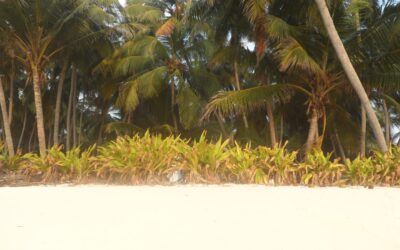The Lakshadweep Islands are made of ‘bilutha mann’ (white sand). The corals sediment to form the white sand of the islands which are often compared to fine sugar. The sand of the island is mostly very clean. This quality adds to the picturesque quality of the beaches. The sand of the uninhabited islands is said to be the purest. The sand banks are often referred as ‘pitti’. The white sand that forms the land can also be found inside the lagoon. For an onlooker, it might feel like a continuity. The varieties of fish and other sea creatures in the lagoon find their homes in the sand and corals. They embed the sea grasses firmly to their place. The crabs on the shore that build and rebuild their homes on these sands are a delight to watch. The ‘mann’ of the beachside provides platforms for many evening gatherings and conversations by the sea. The aesthetic quality of this sand even finds place as a floor carpet during weddings at homes.
The sand and rocks are inevitable aspects of the island’s geography. The erasure of the sands and their accumulation elsewhere is often discussed as a matter of concern. The arrival of the Tetrapods is said to have affected the pattern of sand accumulation as complained by some residents. The beaches are covered by plastic and waste, much to the dismay of many people. Nonetheless, they remain as objects of curiosity to the extent that the students who go to islands get requests from their mainlander friends to get them a bottle of this magical sand of calcium. Well, what are islands if not for these sands? The sand is a metaphor of belongingness to their land and vital for survival in many respects.
